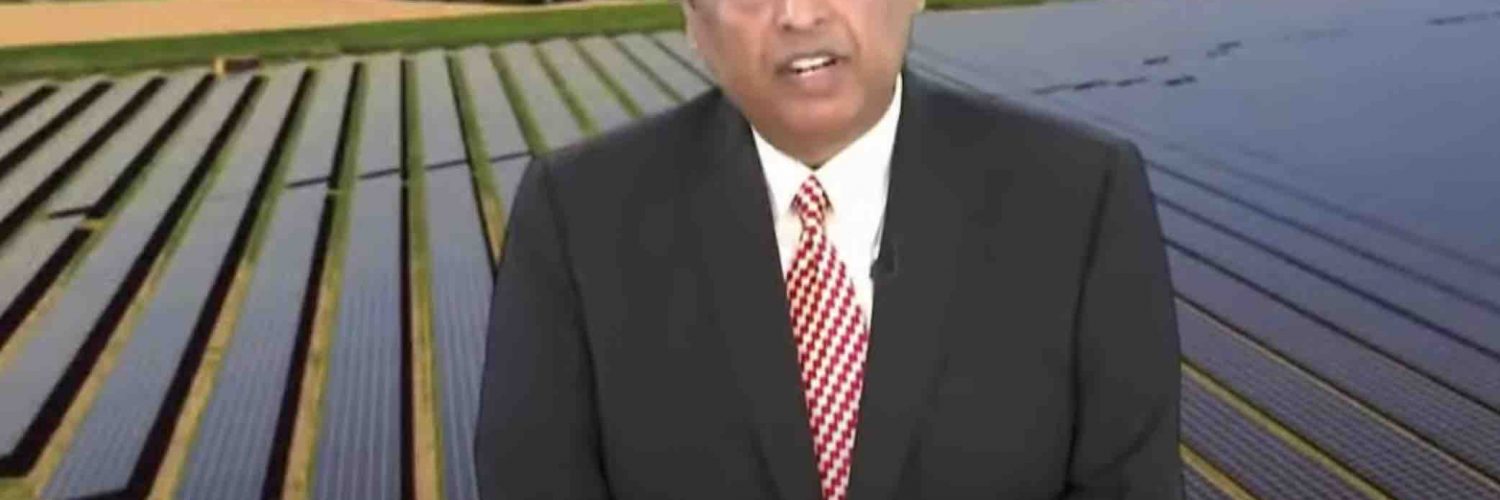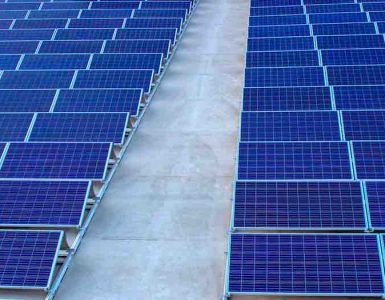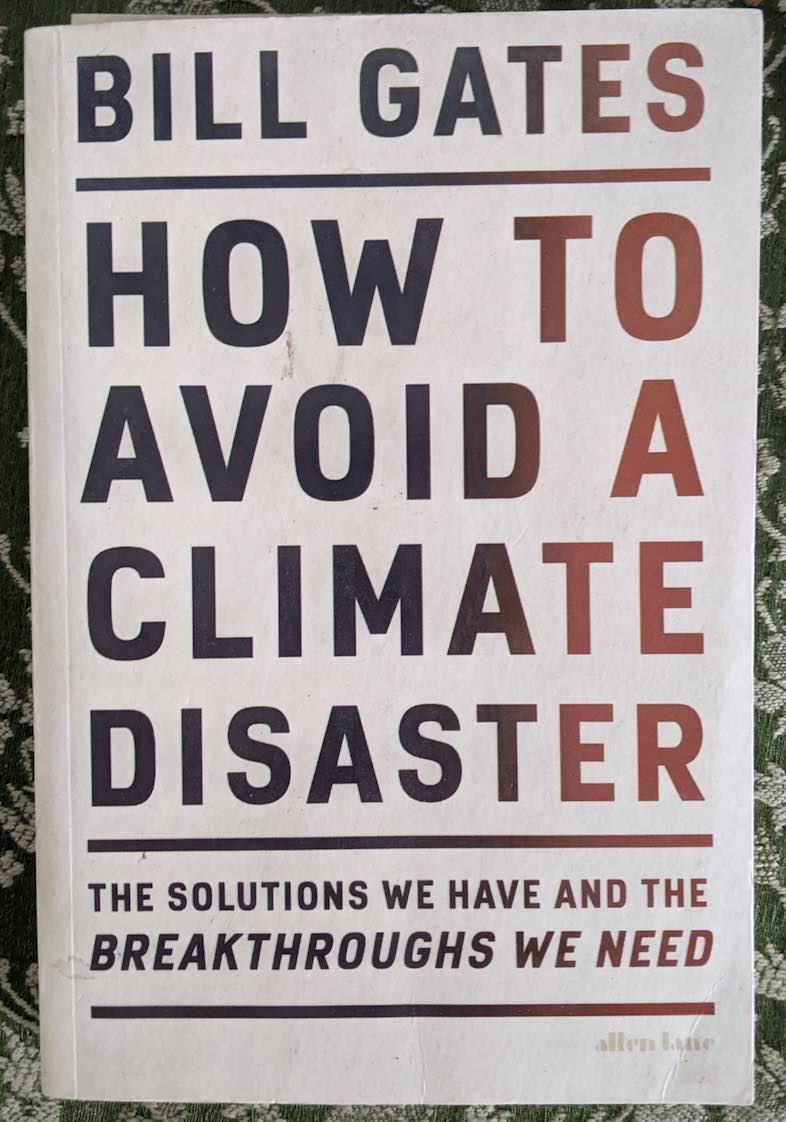It is that time of the year when the chairman of India’s largest private-sector company, Mukesh Ambani, addresses his stakeholders at the Annual General Meeting (AGM), envisioning his plans and accomplishments.
Reliance Industries is involved in multiple businesses, including oil refining, petrochemical, gas, retail, textile, telecom, finance, and recently new energy.
In 2021, the Chairman and Managing Director of Reliance Industries surprised everyone when he announced Reliance Green energy plans. He further committed an investment of over $10 billion (Rs 75,000 crores) over the next three years. This was coming on the back of Reliance’s commitment in 2020 to become net carbon zero by 2035.
As part of Reliance New Energy’s plans, the company has envisioned to establish four giga factories:
- Integrated solar photovoltaic module factory for the solar energy sector
- Advanced energy storage battery factory
- Electrolyzer factory for the production of green hydrogen
- Fuel cell factory for converting hydrogen into motive and stationary power
Like last year, in his 2023 AGM speech, Mukesh Ambani revealed the company’s plans and vision for its New Energy Business. You can read about his 2022 announcements here.
The company has also added Wind Power generation as part of its scope, where it is progressing in developing a manufacturing ecosystem that is critical to achieving cost-efficient Wind Power generation at giga scale.
One of the critical cost drivers in the manufacturing of wind blades is carbon fiber. Towards this, the company has made a foray into manufacturing carbon fiber at a large scale, which will help to reduce the cost of wind turbines. In addition, Reliance has also envisaged partnering with the world’s leading technology players in wind equipment manufacturing to deliver cost-efficient solutions.
The company plans to enable the installation of at least 100 GW of renewable energy generation by 2030.
Reliance understands that generating renewable power will not be enough. They must integrate this with energy storage, which is critical to providing grid-connected, round-the-clock electricity and catering to India’s growing energy needs.
The company is working on a Battery giga factory by 2026 to manufacture battery chemicals, cells, and packs, leading up to containerized energy storage solutions. This will also include a Battery Recycling facility to deliver a truly integrated ecosystem.
The company will start with lithium iron phosphate (LFP) battery chemistry proven at scale for its safety, stability, and life. Simultaneously, they are also focused on the commercialization of sodium-ion battery technology. The plan is to get into sodium ion cell production at a megawatt level by 2025 and rapidly scale up to a Giga scale.
The company has grand plans for Green Hydrogen as well. As they already have an integrated approach to producing renewable energy and storage, they are also working on electrolyzers, which will be critical in their Green Hydrogen ambitions.
A large-scale Green Hydrogen production will help them cater to their captive requirements and simultaneously integrate with Green Ammonia and Green Methanol production for domestic and international markets. Being the world’s leading oil-to-chemical company, Reliance is also looking into green chemical manufacturing.
As part of Reliance New Energy’s plans, the company is also eyeing to address India’s growing problem of crop stubble burning and pollution caused by it. India produces nearly 230 million tonnes of non-cattle feed biomass, most contributing to air pollution.
The company has also commissioned its first commercial-scale Compressed Bio Gas (CBG) plant at Barabanki in Uttar Pradesh in a record time of just ten months. Now, they have set their plans to rapidly scale this up to 25 CBG plants across India and further target to establish 100 CBG plants in the next five years, consuming 5.5 million tonnes of agro-residue and organic waste, thereby mitigating nearly 2 million tonnes of carbon emissions, and producing 2.5 million tonnes of organic manure annually. This would result in a reduction of about 0.7 MMTPA of imported LNG.
In an interesting concluding note, Mukesh Ambani referred to Reliance’s unique ability to offer a practical solution to the ‘Energy Trilemma’ India has been facing, which demands action to overcome three challenges:
- Affordability of Energy: How to ensure that every citizen and every economic activity in India can access adequate, most affordable energy.
- Sustainability of Energy: How India can rapidly transition from fossil fuel-based energy to Clean and Green Energy.
- Security of Energy: How the expanding needs of a fast-growing Indian economy can be de-risked from geopolitical rivalries, conflicts, and potential supply disruptions.
The Chairman further alluded to how Reliance’s New Energy and New Materials business can squarely address this ‘trilemma.’
- Green Energy is becoming affordable because its costs are already much less than Non-Renewables, and they will come down further.
- Green Energy is sustainable because the Sun and wind are never going to disappear.
- Green Energy is secure because India will no longer depend on large-scale imports for energy needs.
Reliance New Energy Plans announced in AGM 2021, Read here.
Reliance New Energy business progress as mentioned in AGM 2022; readhere.






Add comment